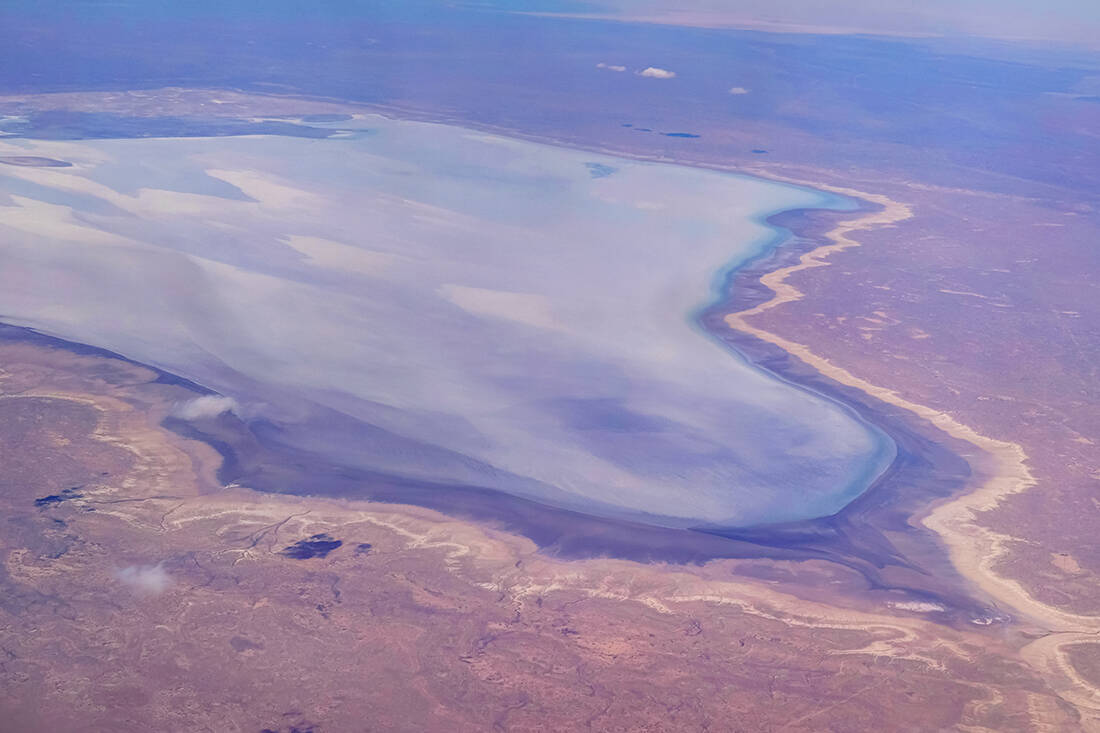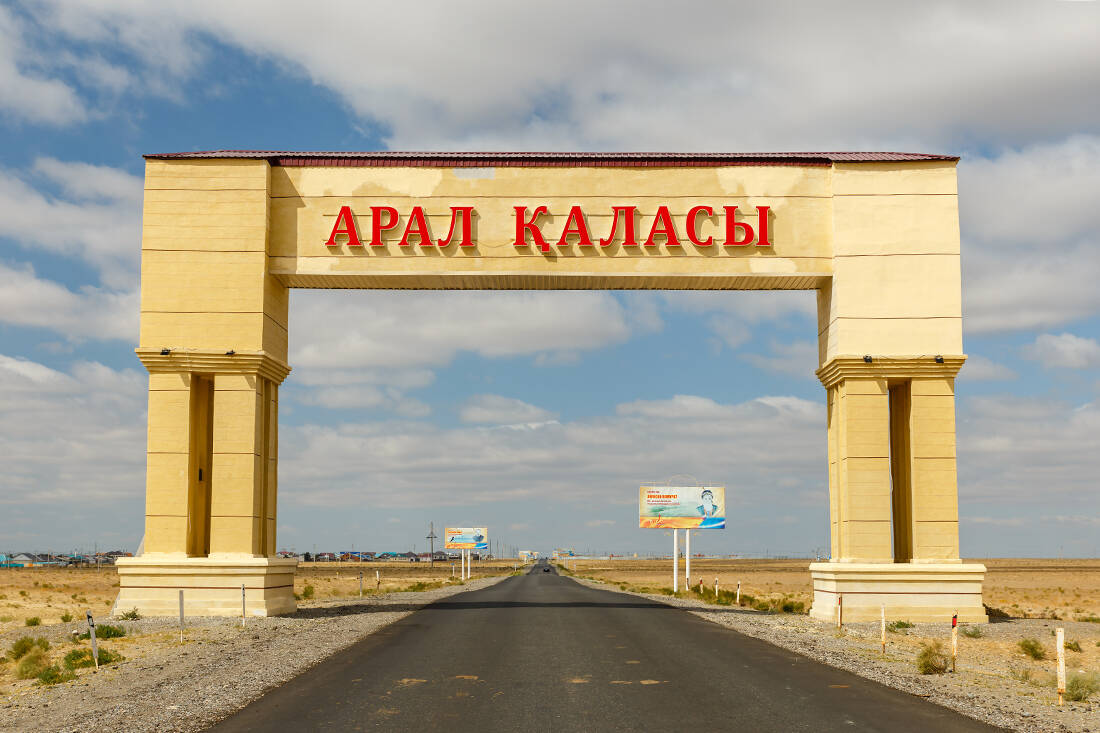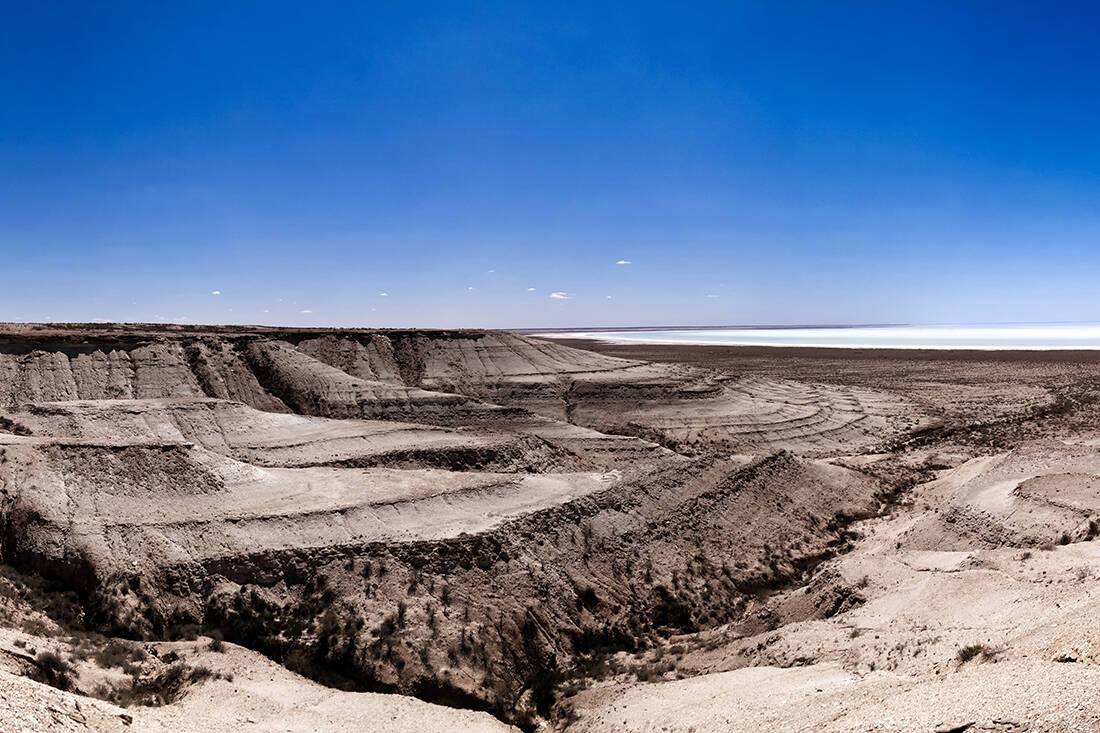And who has not dreamed in his childhood to magically find himself on a mysterious island, among vast treasures and exotic fruits?
Only the reality came to land us abnormally here as well. Because yes, there are such islands in the real world, but they have nothing of the wild imagination of children.
Despite gloomy stories to be told and secrets that had to be well buried.
We will talk about one here, one island who in his language called it "Earth without return"…

An island of true mystery appeared at some point in the Aral Sea, became its largest island and then disappeared forever. For the only thing we are sure of? For his disappearance! She had nothing strange or metaphysical.
"Place (or land) without return" means Barsa-Kelmes in Kazakh, a language belonging to Turkish and its official language. Republic of Kazakhstan. But why did they call it that?
The origin of the name is lost in the depths of the centuries, but it derives its origin from ancient folk legends that tell us about fugitives who took refuge in its lands finding temporary shelter. But when they returned to their places, they looked decades old.
Other legends tell of the mass disappearances of caravans or groups arriving on the island. Most myths speak of a prehistoric lizard, which ate what bad luck brought to Barsa-Kelmes.

Returning to the more mundane reality, Barsa-Kelmes was once the largest island of the Aral Sea, with an area of 133 square kilometers. But as the Aral Sea shrank and became shallower, the island grew larger.
In the 1990s it ceased to be an island and is now part of the steppes of Kazakhstan, another arid and arid part of the Aral Sea, the largest shipyard in the world.
The first recorded mission to Barsa-Kelmes took place in August 1848, when a team of geographers and surveyors described it in detail. Subsequent study recorded the flora and fauna of the island.
But it always remained uninhabited, except for some huts for them hunters and the fishermen of the area. And these appeared in recent years…

Barsa-Kelmes has been terrorizing the locals since antiquity, with a series of popular beliefs protesting everything. And it is certain that for some reason it has remained uninhabited over the centuries.
It was always surrounded by mystery and the ancients spoke of a curse that haunted it. They told stories about whole families who disappeared without a trace. But also for people who visited it for a while and returned to their homes old and helpless.
There are also mythologies that speak of unusual creatures, huge sea snakes and giant monsters with huge necks. It was clear that the ancients did not want people to go there. The reason why we miss it.
And it was precisely this heavy and creepy legacy that turned it into a privileged place for a modern conspiracy theory. We know how and where she came from…

If you happened to pass by there in the second half of the 20th century, it would be rather unlikely that you would not hear about the permanent urban myth of the area: the paranormal phenomena that happened with the scoop on the island.
The thing escalated even more in the 1990s, when many metaphysical researchers came here to study the stories told by the locals with mysterious plane crashes and sightings. UFO.
Oil on the conspiracy theorist threw a popular popular science magazine, the Soviet "Tekhnika Molodyozhi", which hosted a nice story about the island with time jumps, damaged compasses, views UFOs, even interviews with local fishermen confirming all this strangeness.
It turned out that the thing was made, a tangle of some local pens with Moscow fiction clubs to spark public interest and sell issues. But computer science was stepping on solid ground, Barsa-Kelmes's long-standing reputation as a haunted and cursed place.
Yet other Soviet articles talk about encounters with pterosaurs in the 1980s (!) And things like that. However, there have been reports of a secret USSR military base on the island, with top-secret operations, but the accuracy of such sources has never been verified.
We do know, however, that the Soviets had an island in the Aral Sea a secret facility for biological warfare experiments. Maybe it was on the "Island without a return", the only place they could be sure no one would set foot on.
That is why they may have made such an effort to ignite his paranormal activity in the 20th century. The only thing that has never been disputed is the fact that as the area contains huge deposits of salt, people were always advised to close their eyes when the breeze was blowing…

The fourth largest lake in the world, with an area of 68.000 square kilometers and more than 1.100 islands, was to become the most ecologically catastrophic experiment human's.
The Aral Sea has been magically disappearing since the 1960s, shrinking dramatically year by year. Its disappearance turned out to be nothing more than a mystery, but a side-by-side loss of the giant Soviet program to irrigate the Union's fields.
The two rivers that supplied it with water, two of the largest rivers in Central Asia, were diverted as part of its new irrigation program. USSR. One, Jaxartis, has now supplied water to 5 million acres of arable land.
Result; By 1994 the Aral Sea had shrunk to 24% of its original area, a disaster that in 1997 left it at only 10% of what it once was!

The titles finally fell in 2014, when the entire southern part of it disappeared. Desert is today these lands. Worse still, what is left of the Aral Sea, three distinct lakes now, are so salty that nothing lives inside them.
The scene of the total destruction left an area heavily contaminated, with pesticides, remnants of human action, and even remnants of the biological agents of the secret program. "Environmental tragedy" was clearly spoken of by UNESCO.
Barsa-Kelmes has been growing steadily in recent decades, as the level of the waters that surround it has been declining. These 133 square kilometers of its surface were measured in the 1980s. Within 10 years it ceased to be an island. It joined the land and became a desert.

Barsa-Kelmes was declared a protected habitat by the Soviets long before Kazakhstan's independence in 1991. We know neither the real reason nor why so much secrecy. It was the most closed natural habitat in the whole of the Soviet Union, no one could visit it from the very first moment, in 1939, not even the locals.
In 1929 a species of squirrel appeared on the island and 10 years later magically sprang up as a national park. This was officially the reason why the island became protected, the protection of the animal they had brought from the Soviet-occupied Turkmenistan.
For most of the 20th century, Barsa-Kelmes was inaccessible. It was impossible to be on the island. What exactly happened in these 7 decades remains unknown. This is how Barsa-Kelmes lived its cisterns, as a refuge for wildlife lake which was once full of life and activity. Or so we think.
The Barsa-Kelmes Natural Habitat, as it was known, covered an area of 300 square kilometers and hosted 250 species of flora and 56 species of fauna, including the Eurasian wolf. More than 200 species of birds lived or passed through here every year.

The designation "protected habitat" remains even today, despite the severe drought and persistent lack of water. The fauna is now scorpions, spiders and snakes. The highest point of the area, at 108 meters above its surface sea, indicates that this was once the mysterious island.
The protected area even increased tenfold in 2006, covering other parts of the now dry bottom. It has the tragic honor of remaining the only protected area in a zone of ecological disaster in the world.
The locals, however, continue to call the place "island". Barsa-Kelmes, even if it no longer exists, remains true in their consciences.
That is why it is so difficult for the tourist to be there. You can now go to Barsa-Kelmes normally, you will just need a lot of effort. The locals you see continue to consider it very mysterious…
